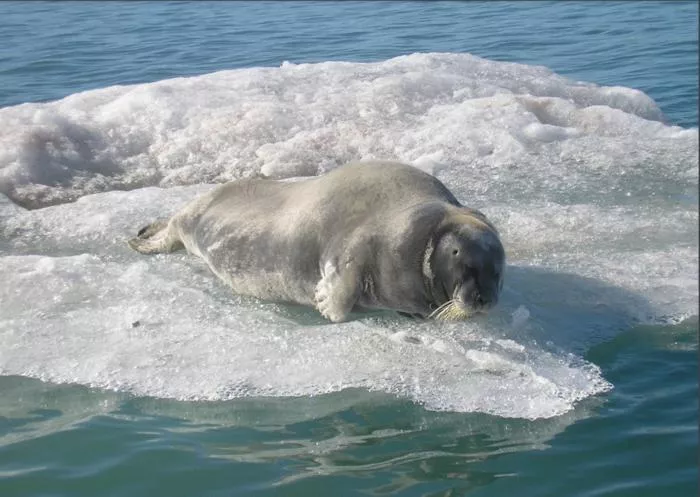Keeping warm in the Arctic—how the Arctic seal does it
In the chilly expanse of the Arctic, where the struggle to conserve heat and moisture is paramount, Arctic seals have developed an unusual survival tactic—complex nasal passages.
A recent study in the Biophysical Journal reveals that Arctic seals are able to efficiently retain heat and moisture during respiration as a result of the elaborate structures in their nasal cavity.
Adaptations for the Arctic
Arctic seals, specifically the bearded seal (Erignathus barbatus), have nasal cavities with more intricate structures compared to their subtropical counterparts like the Mediterranean monk seal (Monachus monachus). This adaptation has helped Arctic seals to lose less heat through nasal heat exchange than the seals in the subtropics.
“This provides an evolutionary advantage, especially in the Arctic where heat loss is energy dissipation, which must be replenished by food,” said corresponding author and physical chemist Signe Kjelstrup of the Norwegian University of Science and Technology.
She elaborated on this, saying that the seals retained 94 percent of the water when they breathed in and out. “This means that most of the water added to the air during inhalation is then recovered during exhalation,” he added.
Testing 3D models of nasal cavities
A previous study had showed that the nose of the Arctic seal was sponge-like and that of the Mediterranean monk seal had a more open structure.
In this study, the researchers created 3D models of the nasal cavities of the two seal species. Then, energy dissipation models were used to compare the cavities’ ability to warm and moisten air during inhalation and to reduce heat and moisture loss during exhalation. This was done in an environment that simulated Arctic conditions (−30°C), and a cold day in the subtropics (10°C).
The team found that in both conditions, the longer, more complex and dense nasal cavity of the Arctic seal was much more efficient at retaining heat and water exchange. According to the press release, “At −30°C, the subterranean seals lost 1.45 times as much heat and 3.5 times as much water per breath cycle as the Arctic seals, and at 10°C, the subterranean seals lost 1.5 times as much heat and 1.7 times as much water.”
Implications of the study
Kjelstrup and her team hope to expand their study to include other species like the camel, an animal that needs to save on water in the desert environment. They intend to apply what they learn to make more efficient heat exchanges and ventilation systems.
“If nature manages to create such great heat exchangers, I think we should copy that in engineering to create more efficient processes, for instance, in air conditioners,” she said.




























